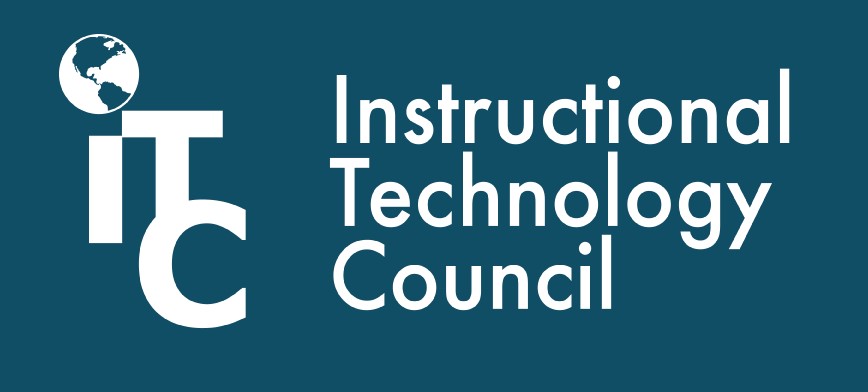While the open education resources (OER) movement continues to pick up speed at many institutions, one of the main criticisms is that OER does not contain equivalent interactive elements as some mainstream publisher content, such as Pearson’s MyLab product or Cengage’s Mindtap.

Publishers are even combatting the low-cost to no-cost movement by offering more cost-effective options for students, like the Netflix of textbook options Cengage Unlimited, or Barnes and Noble’s First Day, which provides discounts and immediate access to required materials. Instructors and administrators will vouch for the quality of publisher integrations and products, but there are several other considerations that should be taken in consideration when adopting new digital materials: substantive instructor interaction, onsite support for faculty and students, and data sharing.
This article is provided by the Instructional Technology Council, an affiliated council of the American Association of Community Colleges.
Substantive interaction
In 2005, the U.S. Education Department introduced educators and administrators to the troubling phrase “regular and substantive interaction” with minimal clarity until recently. Even as higher education was left scratching its heads, distance education departments were developing best practices for substantive interaction in online courses to ensure there was no confusion between their courses and a self-paced correspondence course. While students normally access a publisher integration through an institution’s learning management system like Blackboard or Canvas, they are still behind a paywall, which can cause issues for monitoring substantive interaction. If most of the course content and activity is through a publisher’s integration, administrator and fellow instructor observers would need additional access to that content, which is not easily done.
When working with publisher integrations, instructors are provided with a lot of options and content to streamline or even automate a course. This can be a huge benefit for many overworked and overloaded instructors teaching at multiple institutions with multiple courses, but it may also compromise instructor presence in the individual course.
In addition, the course content becomes a commodity that is used over and over at myriad institutions, which could affect academic integrity. Instructor presence provides an opportunity to personalize a course which prevents the same exact course from being taught and every other community college.
Over the past pandemic years, instructors dealt with excessive academic integrity issues that could be prevented with an individualized approach to course design with homegrown LMS content paired with publisher integration or remixed OER adoption.
Support issues
Adoption starts with instructors, which is a good place to start since it is their course and their students, but the conversation does not always include onsite technical support. An institution’s distance education support team usually consists of experts in technology, but their specialization may be limited to the LMS or the department-licensed tools. It is very difficult for small community college support teams to be experienced in every single different integration and product. When the content is behind an additional log-in, distance education teams may be unable to provide effective support if a student is having issues logging on or using the product.
Larger publishing companies do have much larger support departments than many community college support teams, but outsourcing support to a 1-800-number or chatbot negatively affects the student experience and prolongs the time it will take to get a resolution. Including onsite support teams in adoption, strategies could help provide better support, but also instructors should inquire about student support resources to include in courses to minimize support calls or emails. OER could also offer a solution to support issues since most content is programmed and developed within the LMS.
Data sharing
Let’s talk about cookies. Cookies are small files that collect data from the websites you visit. They help streamline the user experience by remembering login information and analyzing your browsing habits to create content based on your interests. Many LMS publisher integrations pull student data, and it can be a particularly useful tool for big companies like Blackboard, Zoom, Cengage, etc. that want to continue to develop engaging products for our students.
But students and instructors may not be fully aware of the distance their personal data could potentially travel when navigating through different sites. This is not meant to be a witch hunt for companies who collect cookies, but a call to build a better understanding of data and privacy policies when adopting new technology. Browsers and devices may have the capabilities to disable cookies for added security, but Zoom’s privacy policy indicates several levels of cookies that need to be enabled for functionality.
While these levels do not indicate misuse or sharing of data, they are still collecting data. Some sites do not just depend on LMS student data to collect information on users; Cengage provides a detailed privacy policy that deconstructs how they build profiles for their users (our students and instructors), this includes the statement “We may also collect information from publicly-available social media sites, such as Twitter.”
Also, companies, like Cengage, may have an age requirement for entering a “term of agreement,” which would require parents or guardians to sign off on the student’s behalf for community colleges that offer dual-enrollment programs with high school students.
This information should not discourage administrators and instructors from looking into adopting new technology resources for courses. In fact, OER sites like OpenStax also collect user information. There is a common “non-understanding” of how data is collected and shared, and it may just be the cost of “doing business” with technology today, but it does not mean educators and students should go in blindly.
Before adopting a new tool or online resource, educators, administration and technical support should work together to create unique courses, provide substantial student support and extensively review the company’s privacy policies to ensure they understand where student data is potentially going and improve methods of communicating the policies to students.





